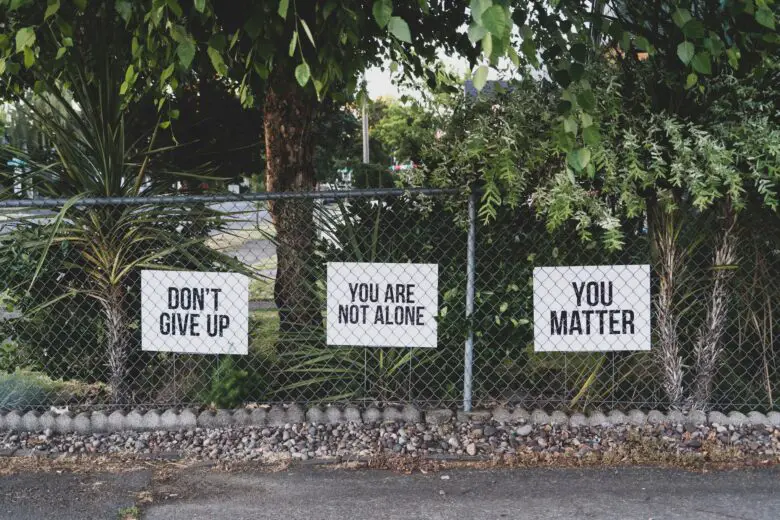7 Ingredients of a Mental Health Makeover

A case of the blues can happen to anyone, for just about any reason. Those Monday blues at the start of another work week are what it can feel like: another blah day in the rat race, climbing the corporate ladder.
A Case of the Blues vs. Depressive Disorder
If you’re in a genuine, psychological rut, though, this same sense of low-grade depression, sadness, and boredom, sometimes also accompanied by feelings of stress and anxiety, won’t dissipate come Tuesday—it persists longer. Like an actual mental health disorder, a case of low-grade depression or the blues can hang around for a while. The difference is that a case of the blues will typically not interfere greatly with daily functioning and won’t display the more classic symptoms of a mood or depressive disorder. (If you’re depressed and are having trouble functioning, seek medical assistance immediately. For information about depression treatment, contact FHE Health.)
For those with a case of the blues (as opposed to a mood disorder), it can be tempting to think the only option is to live with those feelings of sadness and melancholy until they subside. Many people do this very thing. Whatever the cause of their blues—whether it’s a disappointing “dream job,” post-partum depressive symptoms, empty nester syndrome, or downsizing in retirement—they assume they don’t have the agency to improve how they’re feeling. Or, they just can’t imagine feeling better so don’t try. Often the best they think they can do is assume “this too shall pass.”
But the good news is there are things people can do to start feeling better. You can kick a case of the blues—hence the term “mental health makeover.” What follow are the ingredients necessary to feeling better, as part of a 30-day program for improving mental and emotional wellbeing.
30 Days to Feeling Better

This 30-day program for feeling better is meant to help anyone who feels stuck in a rut or mildly depressed about their life. They can do things to feel better—and it can make a difference. At the end of 30 days, you may still be needing some help or extra work, but once you’ve completed the following steps, you could notice a lift in mood and your mental health:
1. Identify the problem(s)
Some people never get to this point. They know they’re in a funk but for whatever reason, whether denial or busyness, they don’t take the time to assess what’s going on. Sometimes the root issue will be obvious. At other times—not so much.
First, take a well-rounded inventory of your life, by dividing it into its various parts and making a quick evaluation of each. Your sense of purpose. Your spiritual life. Your work and relationships. Your sleep, diet, and exercise. Then, while looking at these categories, ask yourself what’s missing or not working. The idea is not to nitpick and judge where you’re falling short but to find what’s missing or where adjustments are needed.
Maybe you’re gaining weight and could benefit from starting an exercise program. Maybe you notice a readiness or desire to be in a relationship. Determine what one or two things, when added to your life, could make you healthier and/or happier.
Another suggestion: Keep a journal and log your moods. Notice when they change and any potential patterns in mood shifts, such as whether feelings of sadness or low-grade depression emerge in response to particular events or at certain times of the day or week. By staying aware and committing to logging these observations regularly, you may be able to pinpoint a cause or correlation that you can then address.
Finally, if you find yourself getting stuck on this step, a licensed therapist may be able to help. Sometimes that outside perspective can be invaluable at helping you get to the core of the problem.
2. Tackle one thing at a time and set manageable goals

If the previous step revealed more than one thing missing in your life, you’re probably in good company. After an in-depth inventory of their life, most people will discover at least a couple of areas where there is room for self-enrichment or improvement. Try to choose one thing to work on for the next 30 days.
The goals also need to be manageable: If you’re hoping to start a new relationship, for example, you can’t expect to have found your soul mate by Day 30. Creating a profile on an online dating site and starting some conversations, on the other hand? That’s doable.
I like to use the following expression with patients: “You eat an elephant one bite at a time, not whole.” That is, you take things step by step, not doing “everything” at once.
3. Celebrate small victories
Reward yourself when you work towards your goals. Say, for example, you’re a working mom who’s goal is to spend 15 minutes of quality time each day with each of her children. (Remember, think manageable goals.) A reward might be an uninterrupted bubble bath or another form of “me” time during the day. The more immediate the award, the better.
4. Do something good for yourself

It can be easy to lose oneself and forget to meet one’s own needs in the act of helping others and meeting the demands of work and family. In addition to celebrating small victories, make a point of loving yourself. So often the last person to be recognized in the constant balancing act of life is you. Doing something good for yourself can be as simple as letting yourself off the hook for not being perfect, taking a break from email, or going for a leisurely walk.
5. Get support
Achieving something of value, especially when it’s not in your wheelhouse, takes support. Don’t go it alone. If your goal is working out, you may not see the benefits immediately. Sometimes a person may need to get a trainer or find a workout partner. If you’re looking for a greater sense of spiritual direction or purpose, it may mean seeking the help of a spiritual director. If you feel like the type of support you need is from a licensed mental health professional, reach out to BetterHelp’s therapy services today and get the help you deserve.
6. Learn from others who have overcome great obstacles and remember the science of resiliency

The science of resiliency teaches that it’s not so much what happens to a person but rather how they react to their circumstances that will most determine their life and sense of wellbeing. Seek out those inspiring stories of people who embody resilience.
7. Check in with yourself
Usually, change happens gradually, but with time and the ongoing commitment to your goal, you should notice a lift in how you’re feeling. (On the other hand, if after 30 days your depression has actually worsened and you’re feeling so down that you can’t function, this is an acute situation that will require immediate help and the focusing of energy and attention elsewhere.)
Just one life change, when consistently enacted, can be impetus enough to brighten one’s mood and mindset. Take this test from Mind Diagnostics to learn if you might be experiencing some symptoms of depression — it may help you take the first step to getting help today.
This article was provided by the director of clinical services at FHE Health, Dr. Beau Nelson, DBH, LCSW.
